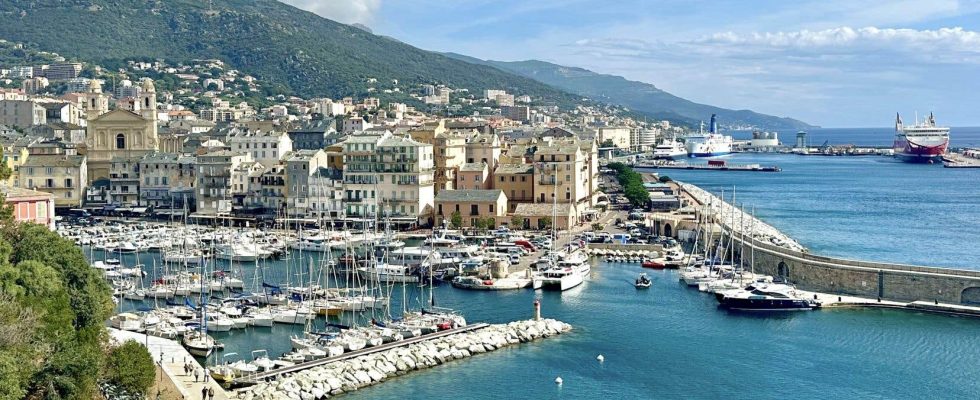This text is part of the special Pleasures notebook
A cruise under the tree? This is undoubtedly the gift of a lifetime. Last summer, our colleague took the grand tour of the Isle of Beauty concocted by CroisiEurope, from Nice to Nice.
For a long time the sea represented a threat to the Corsicans. It was through it that invaders and epidemics arrived. Today, shades of blue appear in all tourist brochures for the fourth island in the Mediterranean, which was occupied by the Republic of Genoa for five centuries. Discovering it along the water allows you to alternate between the gentle rocking of the waves and land excursions. We don’t have to think about anything, we let ourselves be carried away.
In total, 118 passengers boarded the 5-anchor ship renovated in 2014. We mainly encountered retired couples, but also a few families with young adults and grandparents. On the program: citadels and towers erected at the time of the Genoese occupation, an overview of gastronomy, a little botany… Without forgetting the visit to the villages and the beaches.
The mountain in the sea
The ship docks in Bastia in the early morning. Before going to meet the economic capital, we leave by coach towards Cap Corse, known for its rocky ridges and its villages on the mountainside. Big advantage of CroisiEurope tours: the accompaniment of a French-speaking guide. Ours, Virginie Sereni, takes advantage of the journey to recount the main points of the history and geography of the Isle of Beauty. “The eastern slope is gentler and the west, steeper, with the shale plunging into the sea,” she emphasizes. Schist is found in Upper Corsica — the rest of the island is on granite, apart from the limestone enclave of Bonifacio. »
Plants typical of the maquis, such as cistus, myrtle and arbutus, grow almost everywhere on the peninsula, described as an “island within an island”. Imported during the Genoese era, olive trees and chestnut trees are still part of the landscape. “Before the plague, the biggest threat was pirates, like Redbeard,” our guide slips between two explanations.
We notably stop at Nonza, from where we can see a black sand beach below. On the Corsican wine route, where we mainly find muscat, around forty winegrowers produce reds, rosés and whites. In Patrimonio, those tasted at the Murtone estate with cold meats and cheeses from the region are the perfect conclusion to this day in Haute-Corse.
From Bastia to Ajaccio
The next day, Bastia appears charming under the sun. It’s Sunday and the market stalls are all more inviting than the others. A local specialty particularly seduces our taste buds: migliacci, a type of pancake with fresh goat’s or sheep’s cheese. When you walk around the city, the capital of Corsica during the Genoese occupation, you feel more of its heritage.
Bonifacio is one of the favorite destinations for tourists, and it’s easy to understand why as you stroll through the citadel. About thirty minutes’ drive from Porto-Vecchio, where we docked earlier, the Cité des Falaises faces Sardinia. You can even see it when the weather is clear. When you go to see the Lavezzi Islands aboard a small boat, the white cliffs of Bonifacio appear even more dizzying.
To enjoy a walk in Porto-Vecchio, it is better to get up early. Very popular, the port town has colorful shops and bars, with the walls of a 16th century citadele century as a backdrop. For those who want to relax, Palombaggia beach is about twenty minutes from the port.
Listed as a UNESCO World Heritage Site, the Calanques of Piana are undoubtedly among the most impressive places of the trip. The red stone cliffs offer a completely different side of the Isle of Beauty.
Forty-eight hours in Ajaccio is very little. Napoleon’s birthplace is easily discovered on foot from the port. Time to visit the Palais Fesch-Museum of Fine Arts and dive into the crystal clear water of Saint-François beach, and you already have to get back to the ship. We promise to come back to stroll longer in its museums, on its stretches of sand and in its market. We still leave with some cheeses and sausages to extend the trip.
This trip was made possible thanks to an invitation from CroisiEurope and Air Transat.
This content was produced by the Special Publications team at Duty, relating to marketing. The writing of the Duty did not take part.
